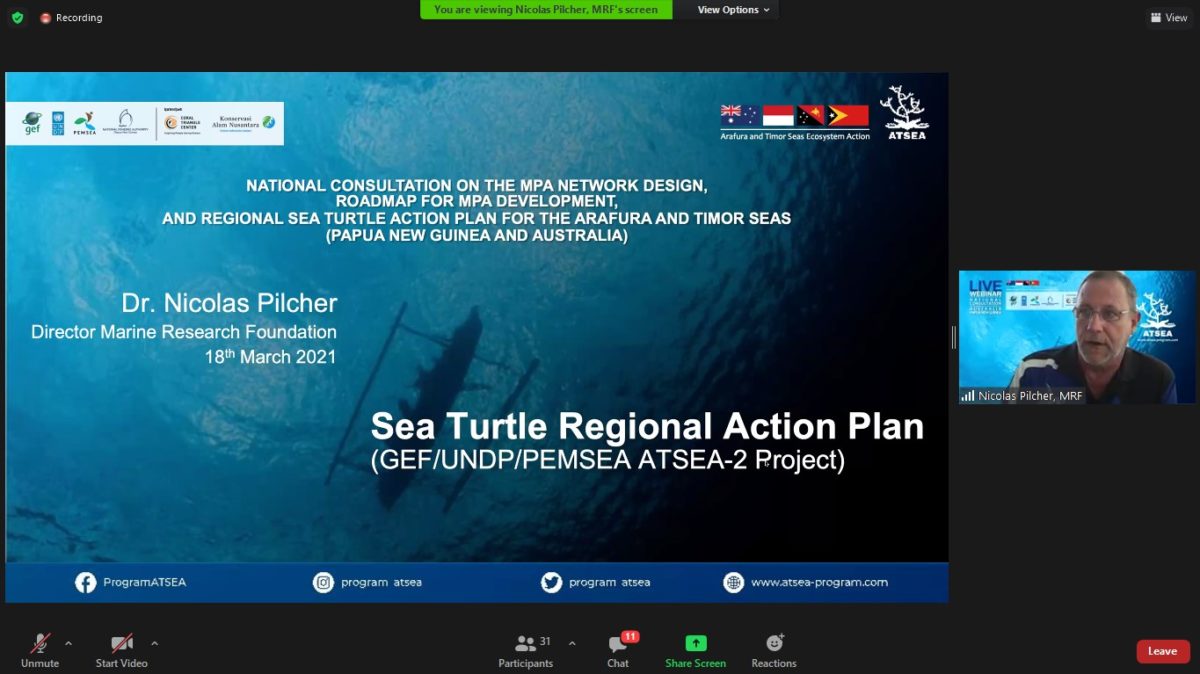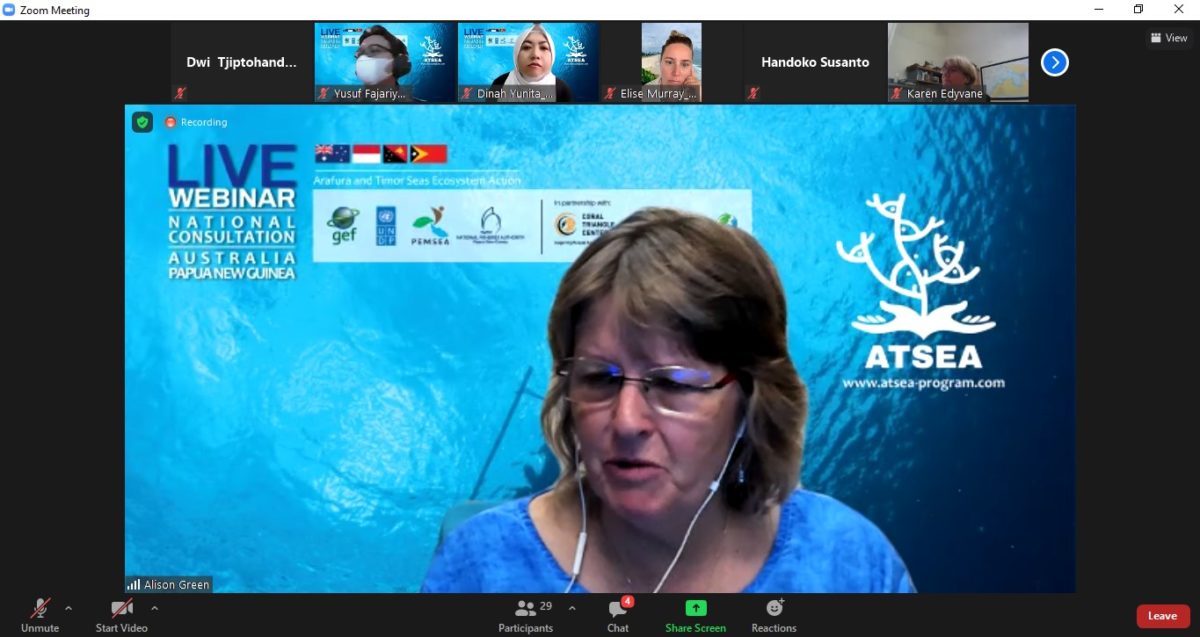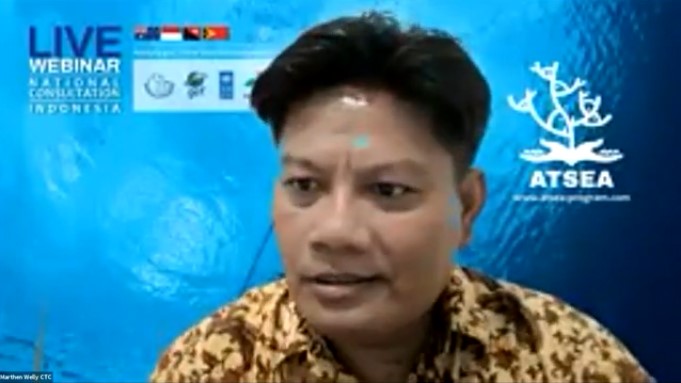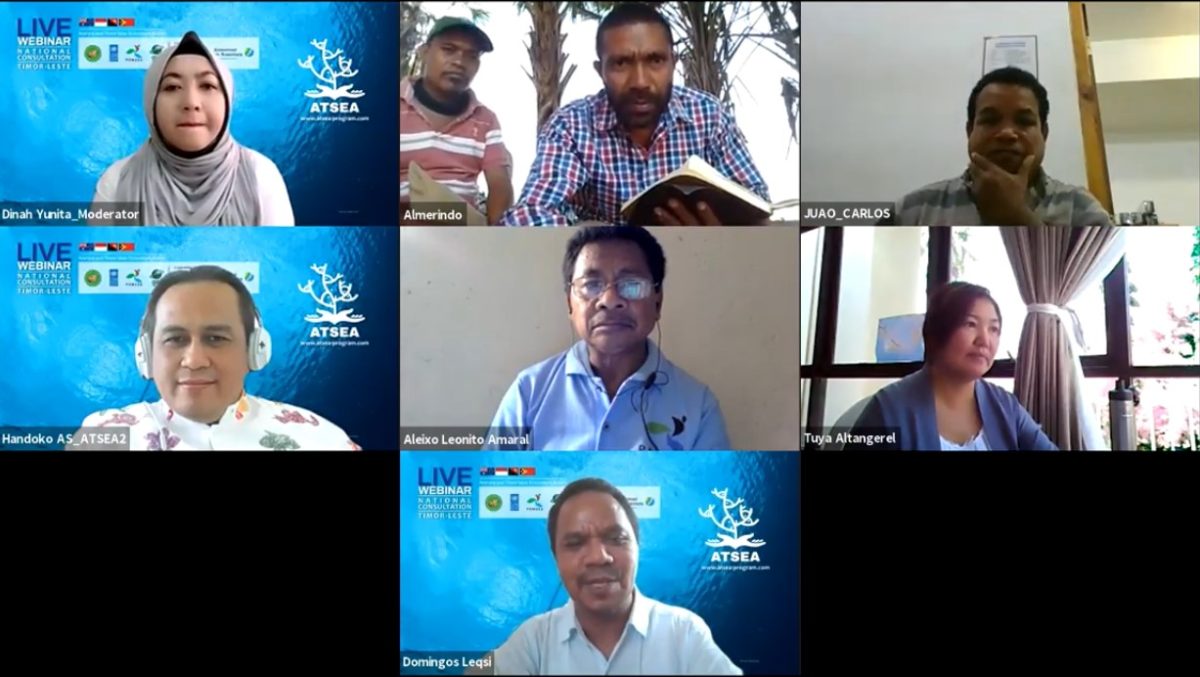
An ecosystem valuation study estimated the economic value of coastal and marine resources in the Arafura and Timor Seas (ATS) region to be about 7.3 billion USD (ATSEA-2, 2021). However, anthropogenic factors threaten marine resources in the ATS region, such as unsustainable harvesting, bycatch, illegal, unreported and unregulated fishing, and climate change. A promising design of a resilient network of Marine Protected Areas (MPA) shows greater ecological outcomes for the coastal communities in the ATS region’s transboundary areas.
There is strong connectivity between waters, ecosystems, and species in the ATS. With a range of shallow- and deep-water marine habitats such as coral reef, seagrass, mangrove, seamount, and trench, the Arafura and Timor seas play an important ecological and economic role at the regional scale and in the littoral nations bordering the Arafura and Timor seas covering Indonesia, Timor-Leste, Australia, and Papua New Guinea.
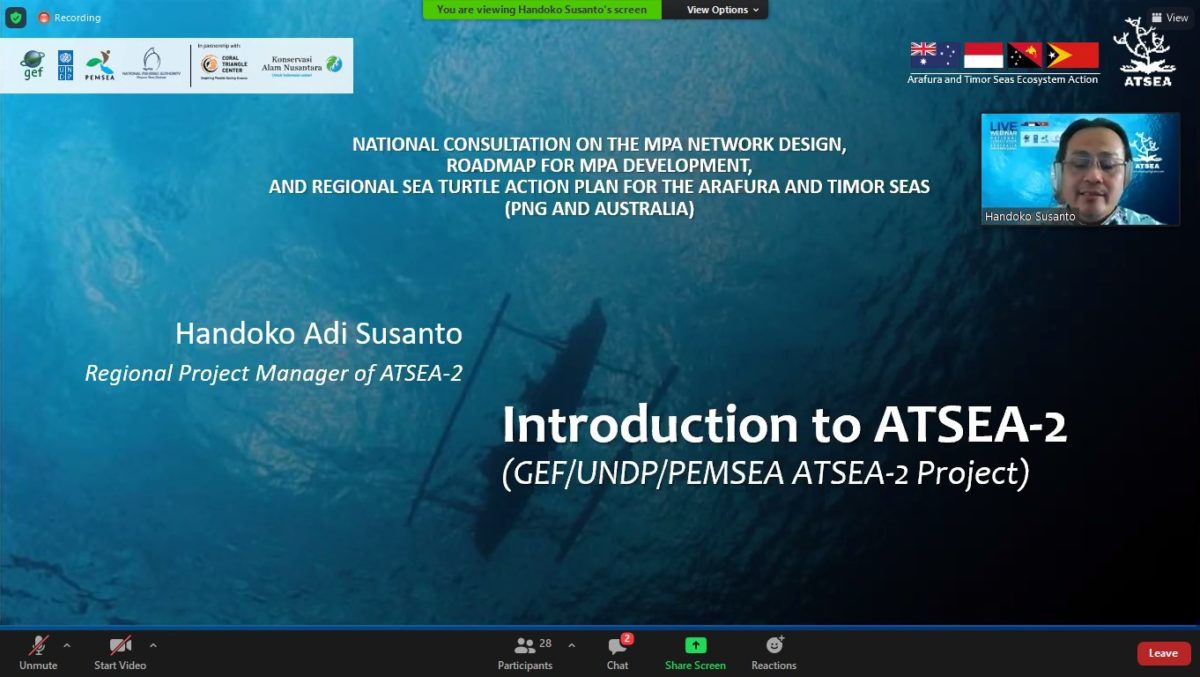
Socio-economically, the ATS is important as a fishing ground for pelagic fish and prawns and as a marine tourism destination. The marine environment in the ATS region is in severe decline, primarily as a result of overharvesting. The impacts from this threat are being compounded by climate change and affecting the ATS countries.

Responding to such challenges, ATSEA-2 works with Coral Triangle Center (CTC), Yayasan Konservasi Alam Nusantara (YKAN), and independent experts to develop a marine protected area (MPA) network design, a roadmap to develop new MPAs, and a sea turtle action plan to preserve priority coastal and marine habitats and conserve protected species in the ATS. In developing these important documents, they have prioritized identifying and analyzing the best and most up-to-date data available.
In March 2021, ATSEA-2 held a national consultation series with ATS key stakeholders from national and sub-national governments, civil society organizations, private sectors, and academe. The first consultation was held for Indonesia on 17th of March 2021, followed by another one for Australia and Papua New Guinea on 18th of March 2021, and the final one for Timor-Leste on 24th of March 2021. In total, around 200 people attended the consultations.
During the consultations, Mr. Yusuf Fajariyanto from YKAN presented the proposal of MPA network design and the roadmap to establish the network with support from Dr. Alison Green from King Abdullah University of Science and Technology. The MPA network is designed based on the gap analysis of 300 best available spatial data layers while considering the Areas of Interest (AOIs) and finally used a systematic conservation planning tool called Marxan to identify potential areas to fill the gaps.
The MPA network design also integrates the existing conservation areas, maximizes fisheries’ benefits, represents shallow and deep-water habitats, protects several critical areas that not being protected (e.g. turtle nesting beach), and achieves targets while minimizing the impact of resources utilization (i.e. capture fisheries, oil and gas mining, and shipping).
“Collaboration among countries in marine conservation is key to address the foreseen threats to the ecosystems. By taking these matters regionally, the MPA network design and the roadmap to establish the network offers a promising opportunity to ensure the sustainability of our marine resources that contributes to sustainable development and the livelihoods of the people in Indonesia and other countries in the ATS region,” said Yayan Hikmayani, S. Pi., M. Si., Head of Center for Fisheries Research of the Indonesian Ministry of Marine and Fisheries.
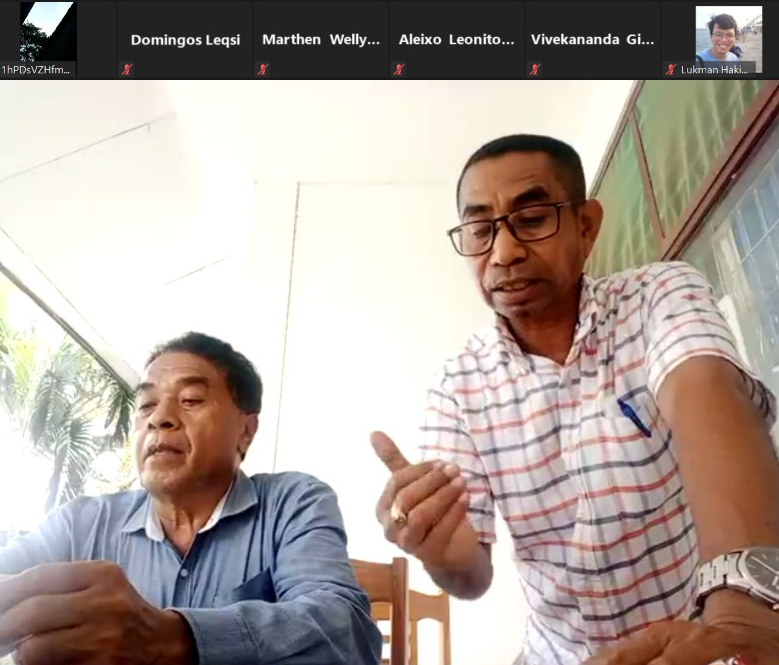
During the National Consultation for Timor-Leste, Mr. Acacio Guterres, Director General of Fishery, Aquaculture and Marine Resources, said, “As planned in the ATSEA-2 project, we are aiming at establishing new MPA in the south coast, and we will refer to the MPA Network design for the implementation.”
Meanwhile, Marthen Welly from the Coral Triangle Center (CTC) and Dr. Nicolas Pilcher from Marine Research Foundation also underscore some key findings concerning sea turtles from his rigorous literature review, consultations, and correspondences in the ATS region. The combined impact of ghost nets, climate change, poaching, and traditional hunting/take may lead to a population plunge for 6 out of 7 sea turtle species in the ATS waters and devastate the green turtles and flatbacks nest in the region.
Three series of national consultations have been conducted between March 16 and 24, and participated by 200 participants. Revision of the three documents has been ongoing based on inputs and advice from the consultations. A final public consultation at the regional level will be organized to gather further feedback and advice from key stakeholders to the revised-draft documents of MPA network design and roadmap to develop an MPA network and sea turtle regional action plan.
(Casandra Tania)
Dr. Nicolas Plicher presenting the Sea Turtle Regional Action Plan Dr. Alison Green, Research Scientist, Red Sea Research Center – King Abdullah University of Science and Technology Marthen Welly, SPi, MSi, Marine Conservation Advisor, Coral Triangle Center Opening remarks by Ms. Munkhtuya Altangarel, Resident Representative UNDP Timor-Leste



